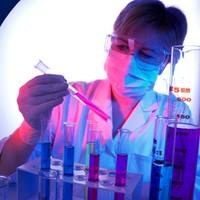(BRUSSELS) – The European Commission proposed Monday a number of improvements to the implementation of REACH, the EU’s chemical regulation, to better protect consumers, workers and the environment.
REACH is the European Regulation on Registration, Evaluation, Authorisation and Restriction of Chemicals. It entered into force in 2007, replacing the former legislative framework for chemicals in the EU that was put in place in the late 1960s and 1970s. In principle, REACH applies to nearly all chemical substances.
In line with the “polluter pays principle”, REACH shifted the burden of proof to industry, making it responsible for the safety of chemicals along the supply chain. Companies must identify and manage chemical risks, demonstrating how substances can be safely used. It requires new forms of cooperation among companies, enhancing communication along the supply chain, as well as developing tools to guide and assist companies and public authorities in its implementation.
The Commission’s review shows that REACH has helped European companies and authorities ensure the safe use of chemicals and the phase-out of dangerous substances. “REACH is the most advanced and comprehensive chemical legislation in the world, and many other jurisdictions have followed the EU’s lead in regulating chemicals,” said Internal Market and Industry Commissioner Elzbieta Bienkowska: “We need to build on this success and ensure that EU manufacturers do not face competitive disadvantages compared to non-EU manufacturers, notably by making sure that imported goods comply with EU rules on chemicals.”
The changes the Commission is proposing include a number of concrete actions to improve the implementation of REACH. They would improve the quality of registration dossiers submitted by the companies, simplify the overall authorisation process and ensure a level playing field between the EU and non-EU companies. The Commission says it wants to further support SMEs in their compliance and enhance enforcement by national authorities.
The Commission also wishes to improve the coherence of REACH with worker protection and waste legislation.
REACH keeps delivering concrete results to Europeans with:
- Safer products for consumers, workers and the environment. Under REACH, the EU has made progress in restricting or banning the use of certain chemicals that may be harmful to human health or the environment and driving their replacement by safer alternatives. Some examples are:
- Banning harmful chemicals: 18 restrictions have been issued issued for different groups of substances such as chromium, nickel and lead in consumer products; bisphenol A, an endocrine disruptor, in cash register receipts and also nonylphenol compounds, toxic to the aquatic environment, in textile articles.
- Replacing the most dangerous substances (“substances of very high concern”) with safer alternatives: So far, 181 chemicals that can have serious effects on human health and the environment have been identified as such and 43 are included in the “REACH authorisation list”, which means that companies need to get an authorisation to use them and that they are being gradually phased out as suitable alternatives become available.
- Non-animal testing: REACH promotes alternative, non-animal methods for the hazard assessment of chemicals, reducing the need for tests on animals. The Commission provided around 40 million per year to support research on alternative methods between 2012 and 2016.
- A comprehensive data set for chemical safety on the EU Single Market: So far, the REACH registration procedure has gathered information on more than 17,000 substances in 65,000 registration dossiers of the main chemicals manufactured and used in the EU. This has improved communication and transparency in the supply chain, allowing Europe to better address risks linked to chemicals and further harmonise the internal market for chemicals.
Ten years of REACH - Commission review



